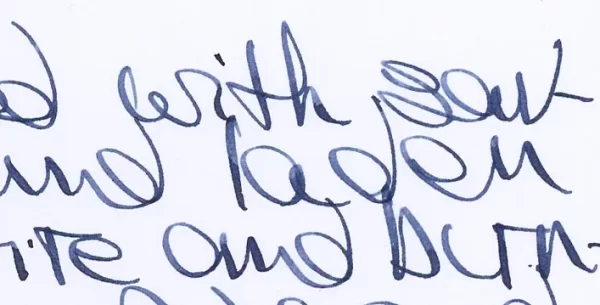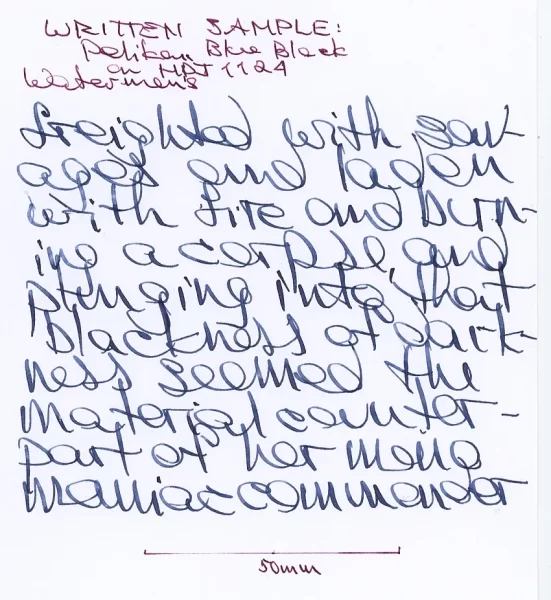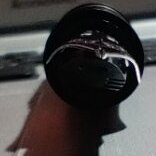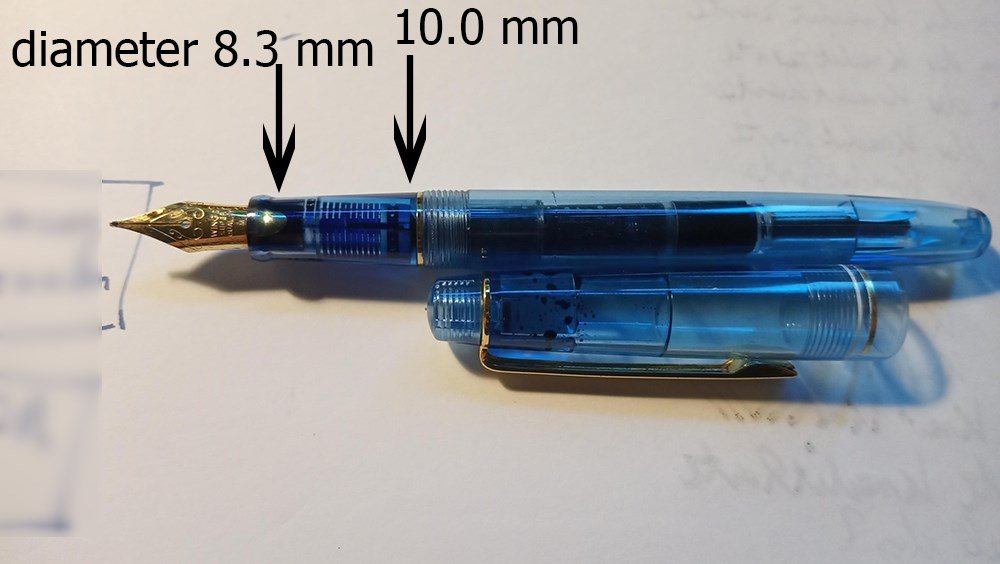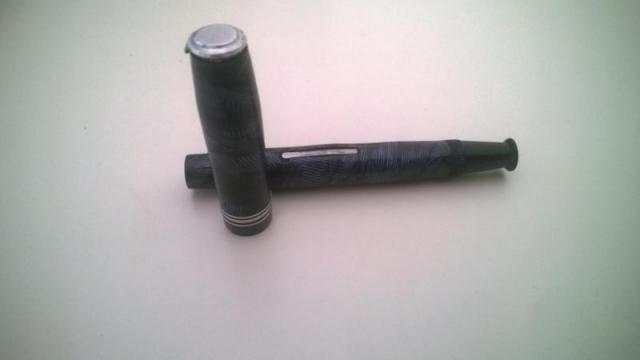Search the Community
Showing results for tags 'flex nib'.
-
Hello, I just bought a Noodler's Ahab from a private user on eBay. It was described as new but it was clearly used at least once because there were bits of ink here and there. Since I've heard it is typical for these pens to need some cleaning or adjusting to get it to work, I assumed the person who sold it gave up on it after a while. Who knows? So I went ahead and cleaned it and flushed it several times. Tried it, very low ink flow. I scrubbed the parts with a toothbrush and dish detergent/water several times. It still didn't work. I tried to heat-set the nib and feed a couple times but it still didn't work. The nib and feed are pretty loose in the section. There is very little friction holding it in and it even falls out when I flush it. If I put the nib in first so that it falls naturally in the cut-out space of the section, I cannot fit the feed in and it gets stuck half way through. I don't want to shove it down with force for fear of bending the nib. I suspect the feed and nib not fitting in the section well is the problem. I noticed a chip on the bottom edge of the feed as well. Do you think this could be the reason it doesn't fit right? If so, is there a way to fix it? I will attach some pictures of the feed. Thanks for reading!
- 4 replies
-
- ebonite feed
- noodlers
-
(and 1 more)
Tagged with:
-

Sandy1 review Pelikan 4001 Blue-black - hi-res Waterman flex nib HPJ1124.webp
Mercian posted a gallery image in FPN Image Albums
From the album: Sandy1
Sandy1’s hi-res image of Pelikan 4001 Blue-black, written on HPJ1124 Laser copier paper, with her Waterman flex nib.© Sandy1
- 0 B
- x
-
- sandy1
- pelikan 4001 blue-black
-
(and 3 more)
Tagged with:
-

Sandy1 review Pelikan 4001 Blue-black - sample text from flex nib on HPJ1124.webp
Mercian posted a gallery image in FPN Image Albums
From the album: Sandy1
Sandy1’s sample text, written in Pelikan 4001 Blue-black, with a flex nib, on HPJ1124 Laser copier paper.© Sandy1
- 0 B
- x
-
- sandy1
- pelikan 4001 blue-black
-
(and 2 more)
Tagged with:
-
I just reviewed the new Fountain Pen Revolution 14k Ultra Flex nib on my YouTube Drawing with Fountain Pens channel. I really am impressed with the nib. I compare it to the steel version and it is an improvement. It bounces back quickly and really draws beautifully. I was able to use it to get very fine lines and lines that approach broad. But what is wonderful is how well the ebonite feed keeps up. When I draw with it there is no skipping. However, it is a bit scratchy as a pen for writing because it is a true extra-fine and like the Pilot Falcon extra-fine, it has a lot of feedback when writing. It might be great for calligraphy, but I don't do calligraphy. It doesn't come cheap, but FPR often has sales with at least 20% off. The pen itself--an ebonite Himalaya V1, is not particularly great. It is reasonably comfortable but a little rough in its finish, particularly at the edge of the cap. An the converter is a cheap plunger type that I don't like. But the nib is outstanding!! I have attached two drawings that I think shows the versatility of the nib. It is hard to describe, but this is the first flex pen that I have used that I feel really feel does subtle cross-hatching. Keep in mind that I have two Waterman vintage pens and several of the Pilot flex pens (912 FA, 743 FA, and the Falcon SEF). When I use it without pressure the line seems as fine at the Platinum 3776 extra ultra fine nib, which is really fine, and yet it also does lines that are broad and there is no skipping with drawing. I cannot judge its performance for doing Spencerian or Copperplate writing. You can see my review at
-
This is my first Santini fountain pen and it's the one I like more till now. I'm a fountain pen lover and my favourite ones are my ebonites. They are all hand crafted by artisans. The one I introduce you now is the Santini Libra Voyager with the superflexy nib. It's a bit special because it's made with care and love by Italian craftsmen who know well their work. These are my first impressions more than a review. Appearance & Design (10) In my view, it's appearance is beautiful. The swirls among blue, turquoise, green, magenta and black in the ebonite are always very nice to watch, it's mesmerising if you turn the pen. The material is precious (rubber with sulfur, badly named as hard rubber); it's name comes from it's similarly with ebony. The design is very well thought-out. It is uncapped in one and a quarter turn. The clip is long but is very tight (too much). The section is long and very comfortable to hold and it tappers up at the end a bit preventing your fingers to meet the nib. It's gurthy enough for my liking. The Santini 18 kt gold nib (superflexy in this piece) has one advantage: you can interchange with other Santini nibs. It can be posted very securely but I do not recommend you to do it because with time you can damage the surface of the ebonite (if you like posting, do it with care). The pen is exquisitely beautiful and the workmanship is top notch. The ebonite warms to my hand and the pen is a comfortable writer. Construction & Quality (9) Outstanding construction and quality. The pen is beautifully made. Ebonite is a precious material for me. The fountain pen is handcrafted (I give a high value to pens made with experienced hands more than inyected plastic, for example). This pen is made by artisans and well engineered. The quality of the threading is outstanding. It has very comfortable long section. Perfect and beautiful cap band. The clip is very tight, it's a pity. It's the only bad detail and that's the reason to have a 9 instead of a 10. The polishing is very good and the pen is full of well made details. I remember that Da Vinci said "details make perfection and perfection is not any detail". Weight & Dimensions(10) Weight: 31g Length: 145mm. 135mm uncapped Cap length: 68mm Cap diameter: 17mm Body diameter: 15mm (max) It has a perfect balance. It is a not very lightweight nor heavy and comfortable pen. It's a gurthy pen but not too much, I feel that dimensions like the perfect ones. The grip is 11.4mm at its narrowest and is very comfortable between your fingers. It's slightly hour-glass shaped and flares out closest to the nib so your fingers won't slip. Nib & Performance (10) The nib is a Santini 18kt gold extra fine and flexy (they call it superflexy but it's really a nice and very good semi flex), so it's performance is assured. It does not require a lot of pressure to flex but it doesn't open like a wet noodle. It writes beautifully and with very good and nice line variation if you want and very good snap back. You can choose among plenty of different nibs with different sizes (it's one of the best companies if not the best in the world about offering diferent nib options) and plating. Mine has a bit of feedback (I prefer that characteristic better tgan the glassy nibs) and it's juicy, without being a gusher. The nib comes with an ebonite feeder to keep a well flow. Santini makes their nibs and I really appreciate that. I think in Italy only Aurora and Santini make their own nibs. Filling System (10) I like piston filling systems. The pen encapsulates a Schmidt piston component with a ratcheting sound that alerts you when you've filled the pen completely. It has a ink capacity around 1.1~1.2 ml. Schmidt is a well-known German quality brand and their piston component is reliable and as sturdy as a classic piston filling system. If you have any problem, Santini has a repair service that if it is like their fabulous customer support and service, I wouldn't think about that. I know you have to store the pen with care and without light and to dry it well after washing but I prefer the feeling of ebonite when you touch it and it looks beautiful. Cost & Value (10) The quality/price ratio is very good. 369 € including shipping is a fair price. But the good point is it's value, it's a fountain pen made by hand, if you take only that into account, it's real value is very high. Beside that it's made with care and love and perfectly engineered. Katrina (customer service) is so kind and professional. The way she supports and deals with you is outstanding and they send you the pen very fast. Conclusion (Score, 59/60) I feel very happy with this fountain pen. It is beautiful and very well made, with love by artisans. Very well engineered and thought-out. I am also very satisfied with their customer kindness. I think we do well to support handcrafted fountain pens. I am perhaps a bit viassed because I do love ebonite. The price is more than right if you consider the artisan work. They are all craftsmen. They also package the fountain pen beautifully. Santini does not appear to invest in marketing and I think they sell most of their products directly to the end customer. I think that their pens are of perhaps superior material and quality than the better known Italian brands. This pen will remain one of my best. I have become a fan of Santini. I would like to give my congrats to all Santini team, they are great. Best regards to everybody. Take care Miguel Ángel.
- 10 replies
-
I dropped the pen several days ago and used 3 different Jowo Nibs to attempt to replace the ruind lex nib. None of them fit. Mr Kandan wrote me a terse emai assuring me any Jowo #6 would work. Now, after probably stripping the inner screws of the top sleeve joining the body to the top, I'm afraid this pen is useless. This is not the forst time I have had major problems changing out a nnib on an Indian made pen. Has anyone else experienced a nib fit issue with Ranga pens?
-
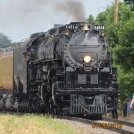
What is in your opinion the best flex nib, pen ever?
Finriel posted a topic in Fountain & Dip Pens - First Stop
- 24 replies
-
- flex nib
- fountain pen
-
(and 2 more)
Tagged with:
-
I have been using fountain pens since 1976. That time it was primarily hero pens and mostly locally manufactured moulded pens, the brand names I find hard to remember. Most of these pens were of two filling categories only, sac filler(mostly made in China) and ED. Thereafter I graduated to Parker and continued using a few of them till 2019 on and off. Meanwhile got facsinated by Ballpens, netters, jitters, Gel pens, roller pens etc. Came 2018. I still had three Parker Vectors, one each for using Blue, black/green and red inks respectively. I came across an article on Ratnamsons and history of fountain pen turned in india. This made me search for manufacturers in India and I thought of reviving my love for Fountain pens. Thus I jumped headfirst in acquiring all I could lay my hands on and in the process became friends with many turners and became aware of their products too. Subsequently I graduated to use of flex nibs and dip nibs. I got interested in calligraphy fonts and cursive writing. That will be a different post. Currently I will focus on three pens from different brands using flexible nibs Magnacarta Emotions with stock flex steel nib, Kanwrite heritage with KANWRITE Fine flex steel nib and LOTUS pen with Kanwrite 14k Gold flex nib. The LOTUS pen is part of a limited edition initiative by Fountain pen lovers of India with 50 pens only made . These three pens when I started flexing, I realised that even in steel flex nibs, the amount of pressure required to assert pressure was different. It required lot of efforts to flex Magnacarta vis a vis KANWRITE Heritage. The LOTUS pen with gold nib was but easier.
-
- magnacarta
- kanwrite
- (and 6 more)
-
Hello everyone, Greetings from Malaysia. I had been browsing as a guest on this site for months but only decided to sign-up a few days back (because a voice in my head told me to do so). I was introduced to fountain pens in school by my teachers when I was 11 and always had a fondness for them since then. My first fountain pen was a Hero, which was awful. Soon after, I got my self a Pilot Birdie which was a delight to use. I used it until I was 26 when I lost it in the office. Only in the past year that I seriously started collecting fountain pens as well as various shades of ink. This is my latest acquisition - A Ranga Model 8b eyedropper in matt black with a Kanwrite flex nib. I paid for it on Thursday and it was delivered on Monday to my amazement (Kudos to Ranga Pen Co and DHL). It is a thing of beauty but had a huge problem. The tines had a gap the size of Grand Canyon. So there was no ink flow at all. One of the advice on the internet is to soak the nib in hot water to bring the tines together. Unfortunately, that did not work. I resorted to using brute force and squeezing the nib to get the tines closer. That seem to have done the trick. I have filled it up with Pelikan Edelstein Moonstone and so far so good. Anyways, it is nice to be a part of this community. Regards, -Logen
- 7 replies
-
- ranga 8b
- eyedropper
-
(and 2 more)
Tagged with:
-
What fountain pens can take FPR (fprevolutionusa) #5.5 Flex or Ultra Flex Nibs?
Orange22 posted a topic in Fountain & Dip Pens - First Stop
Hi. I hope someone can help me with this because till now I was unable to find a solution on google or even youtube. During the last year I bought about 10 different china pens. But he only one I feel comfortable writing with is the one on the photo. I think it’s a Pilot 78G copy and it fits perfect to my hand and the nib is also a bit flexible. So what I need is a plastic/resin pen that can fit a #5.5 Flex or Ultra Flex FPR nib AND has a thin section. Similar to the one on the photo. I contacted FPR already and the recommended me to go with a “Indus” but to me the section of that pen looks too wide. Thank you!! -

A Flex Pen For Drawing, And An Ink To Go With?
TaylorJ posted a topic in Fountain & Dip Pens - First Stop
Hi all, I'm still very new to fountain pens and am looking to possibly add something specific to my collection. I have a couple Jinhaos, a couple TWSBI Ecos, an Al-Star, etc., and I love them dearly. However, I'm looking to upgrade a little bit (possibly a lot bit!) in terms of a flex pen for drawing and illustration. I am an illustrator both by passion and by trade, and I do a little of everything: graphic design, comics and graphic novels, pen-and-ink illustrations, watercolor painting, and colored pencil pieces. My first and main love, though, is pen and ink. I have used techpens (essentially very nice fine point markers), dip pens with India ink, and even Sharpie markers. I just love the stark, striking look of black ink on plain paper. Currently my combination of choice is a Nikko G-pen nib in a regular Speedball nib holder (or my Tachikawa nib holder when I can find it!), with a bottle of Dr PH Martin's Black Star India Ink. (Just to give an idea of my baseline.) Very flexible nib, and a very dark, very striking black India ink. So anyway, once I got more than 5 minutes into the fountain pen hobby, I realized "oh wow there are flex- and soft-nib pens! And there are people who draw with flex pens! I WANT TO DO THAT." My main complaint with bottled india ink is just that I have to re-dip every few seconds, and it always feels like it's taking for-freakin-ever due to that. I love that with my fountain pens I can replace the ink at will, and can keep using one pen for a long time, but I don't have to dip them. My question (yes, we're finally getting to the question) is: What are some good combinations of bulletproof or semi-bulletproof inks, and flex-nib pens? (And yes, I know not to put india ink in a fountain pen.) I am looking for essentially 2 sets: one to start with to experiment with and see if it even works for me, that should be under $50; and then possibly a much nicer pen and ink combination (upwards of $200 if necessary) that would last a lifetime, if the first combo works for me. My criteria for the ideal pen/ink combos: - Ink should be black, and bulletproof/waterproof, to some extent, at least much more bulletproof than the average non-bulletproof, very-water-soluble fountain pen ink. - Pen should be at least somewhat comfortable and have a piston or piston-converter system. (I just hate squeeze cons) - Affordable, at least the first one. (looking to hopefully spend less than $50 on that initial "experiment" but am willing to consider a lot more for the following one) Size, ink capacity, style, etc., are all pretty open - I'm not going to be picky about the initial experiment because it's not the end goal, just a test run, essentially. I have a specific question too: Is is unwise to use pigment ink (ie Platinum's Carbon Black) in flex pens? What about if I clean it diligently every week? (Again: I know not to use india ink in a fountain pen. I'm talking about superfine pigment ink designed for fountain pens.) Even more specifically, I am currently looking at testing out this whole fountain-pen-and-ink-for-art thing with a Noodler's Ahab flex pen and trying it with Platinum's Carbon Black. Is that a terrible combination? Basically, is that pen any more or less likely to have trouble with Carbon Black than any other? Even for under $50, I don't want to ruin a pen needlessly. Thanks in advance for any advice anyone has. -Taylor -

Flex Nibs Shootout: Montblanc 149, Pilot Custom 743 Fa, Vintage Waterman's 3
MichalK posted a topic in Fountain Pen Reviews
Not typical video for me (not urushi this time). With help from my girlfriend - a small shootout of flexible nibs. Enjoy -

Fountain Pen Revolution New Release : The ‘Jaipur V2’
Jamerelbe posted a topic in Fountain Pen Reviews
In February of this year (2020), the folks at Fountain Pen Revolution released the latest pen in their range – the ‘Jaipur V2’. The original Jaipur came out some 5 years ago now, with a fairly basic piston filler mechanism and a #5.5 nib – and with the funky smell that’s characteristic of pens made from vegetal resin! The Jaipur is an update in almost every imaginable way – larger nib, upgraded piston fill mechanism, and manufactured from more ‘up-market’ materials (that smell a lot more 'neutral'...). I reached out to Kevin the moment I saw a preview of this pen on his Instagram feed, and asked him to let me know when it was available for sale. In early February, the day they launched on the PFR website, I placed an order for a Jaipur V2 in blue acrylic, with my favourite Ultra-flex nib – and a couple of weeks later it arrived, with an orange acrylic pen thrown in. [Full disclosure, this latter pen was provided free because I’ve reviewed a few FPR pens before – it was a ‘tester’ pen, that couldn’t be resold because it had already been used.] I have a much wider range of pens in my collection than I did when the original Jaipur came out – including some much higher-value pens. I don’t tend to use my vegetal resin Jaipurs, Gurus etc unless I’m testing out an ink that I fear might stain my better pens, and I very rarely take them ‘on the road’ with me. The Jaipur V2 is a very different story – these are attractive looking pens, with a much higher ‘fit and finish’, and have been pretty well constantly inked since I bought them. ______________________________________________________________________ Appearance & Design The Jaipur V2 conforms to a fairly standard pen shape – more or less cylindrical along its length, though the cap diameter is about 1mm larger than the body, and there’s another step down in diameter where the barrel meets the blind cap that covers the piston mechanism. [This incidentally is one of the places where the new design is an improvement on the old: the original Jaipur ends with a piston knob that could be actuated accidentally by a curious friend, forcing ink out of the nib; the piston knob on the new version is covered by a blind cap that matches the colour of the pen body.] Removing the cap reveals two of my favourite features of the pen: the #6 nib, and a sizeable clear ‘window’ that allows the ink volume to be monitored. I appreciate the fact that Kevin designed this pen to accept his proprietary #6 nib units, so that swapping nibs out is much easier than for the original (and for the Himalaya V2, which has given me major hassles in this department!]. I really like the materials Kevin chose for the manufacture of these pens – the cracked-ice style acrylics are brightly coloured (blue and orange are the only options right now), with moderate translucency. I’ve been very tempted to buy the mottled brown ebonite version so I have the whole set – but just can’t quite bring myself to buy a 3rd version of the same pen! [i already own several Himalayas, and 4-5 original Jaipurs…] … Construction & Quality The fit and finish on the Jaipur V2 is really good. These are probably the highest quality pen in the FPR range – which I’d guess you would expect, given the higher cost of the pen. The acrylic is highly polished, the parts fit together well, and I’ve had no trouble with ink drying out over time, which suggests the seal on the cap is airtight. I only have one complaint, if you could even call it that: I find the piston mechanism fairly stiff, especially the first turn on emptying or filling the ink reservoir. … Weight & Dimensions Placed side by side with the original Jaipur, you can see the ‘genetic’ relationship between the two in terms of design – but the V2 is a little larger on almost every dimension. Capped the pen is 140mm long (compared to 135mm for the original); uncapped it’s 133cm long, while posted it’s over 170mm. The latter looks a bit unwieldy – it’s not really designed for posting – but the cap sits on fairly securely. The barrel of the pen is 13mm in diameter (the cap is 14mm), while the grip section sits at a very comfortable 10.5-11mm. The whole pen weighs in at a very 16g – uncapped that drops to 10g, which makes the pen very lightweight, and ideal for long writing sessions. … Nib & Performance I willingly paid an extra $US14 to ‘upgrade’ to an EF ultra-flex nib – it’s far and away my favourite in the FPR line, though their other nibs perform well too. This pen is designed to take the #6 screw-in nib units that were originally designed to fit FPR’s Triveni and Darjeeling pens – and the standard nibs (EF-B and 1.0mm stub) are paired with a plastic feed. The ultra-flex nib, though, comes with an ebonite feed (with a very wide and deep ink channel to maximise flow). Since writing my review on the Himalaya V2 (FPR’s second-most recent pen release), I’ve found a few reviews complaining that with the ultra-flex nib they were prone to railroading and ink starvation – I found the same problem with one of mine, that required some effort to fix (some judicious deepening of the ink channel). I’ve had no such issues with the Jaipur V2 – it’s an exceptionally wet writer (with the ultra-flex nib installed), that allows me to flex with freedom. For everyday writing, I’d recommend purchasing one of the ‘regular’ nib units – these ‘tame’ the pen nicely, producing a more moderate ink flow. [Of course, you can always order the pen with the ultraflex nib installed, and purchase a spare ‘regular’ nib unit in the size of your choice, to swap in as you wish!] … Filling System & Maintenance As I mentioned earlier, the filling system is (apart from the nib assembly) the biggest ‘upgrade’ for the V2 of the Jaipur. Whereas the older version relied on the same kind of clutchless piston with nylon seal that’s found in the Guru, the Indus, and the Dilli, the piston in this pen is much more robust, and relies on more durable washers (which I think would also be easier to replace?) for maintaining a good seal. Also, whereas for these earlier model pens the entire rear of the pen functioned as a piston knob, for the Jaipur V2 the piston knob is concealed under a screw-on blind cap – making it much less likely the piston will be turned accidentally between fills. The maximum capacity of the ink reservoir is around 1.2mm. The pen can be completely disassembled for cleaning, and easily reassembled – my only complaint with the pen (if you could call it that!) is that the washers on the piston fit very snugly against the inside walls of the pen. This makes the piston mechanism very reliable… but also a bit stiff. Maybe it’ll loosen up a little with time? … Cost & Value At US$55 (plus postage) for ‘regular’ nib sizes (B, stub and flex nibs cost $4 extra, and the ultraflex nib will set you back an additional $14), the Jaipur V2 is FPR’s most expensive pen – but it’s well worth it for the upgraded design and materials. … Conclusion Until my V2 Jaipurs arrived in the mail, I’d have said the Himalayas (V1 or V2) were my favourite line of pens from FPR. The Jaipur has changed that up, though: these pens are very attractive, they feel great in the hand, and they write like a dream. I’d happily recommend this as a mid-range pen, that competes very well with other fountain pens in this price range. And Kevin’s / FPR’s customer service has, in my experience, always been exceptional.- 4 replies
-
- fountain pen revolution
- indian pens
-
(and 3 more)
Tagged with:
-
Here is the my latest pen! This is an ebonite pen, with an acrylic window within the section and the barrel. It is a capless pen with a twist mechanism, similar to the safety pen one. Twisting the section onto the barrel allows the nib to come in and out. The nib is juicy and flexible (Wahl eversharp #2). The filling mechanism is a copy of Fountainbell's bulkfiller with a modified magnetic (neodymium magnet) mechanism to retain the filling pellet. The barrel end is decorated with an amethyst. The pen length is 12,6 mm length closed and 13,4 mm opened, the maximum diameter is 16mm. The filling capacity is 3,5ml with a regular stroke but can be extended to 4,2ml expelling the air of the pen, penpoint up and resucking ink again. Here are the pictures and the X-ray of the pen.
- 10 replies
-
- lamy 2000
- visualted section
-
(and 5 more)
Tagged with:
-
Hello everyone here at FPN, this is my first publication this year and I take this opportunity to show you my most recent acquisition. I made this purchase on eBay at a good price and it is a very interesting vintage flexible fountain pen: Measures length: 5 inchesBrand: UnknownPen material: EboniteClip material: SteelOverlay material: I don't knowFilling system: EyedropperInk capacity: 3mlNib: 14K Warranted # 8 flexFlow: Wet It is a fairly light and comfortable pen to use and is quite fun to use and enjoy its flexible nib and its fed is quite generous, but it requires me somewhat decent paper since the feed is wet. Next I will show you the photos of the fountain pen and some writing samples using flex and another without flex.
- 10 replies
-
- ebonite
- black hard rubber
- (and 8 more)
-
There are already many reviews of the Edison Glenmont pen on FPN, but after receiving and using this particular Glenmont, made from the special Jonathon Brooks’ “Modified Japanese Autumn” acrylic resin that was used in the 2019 San Francisco Pen Show LE Edison Menlo Pen, I felt I needed to make a short review about this beautiful pen and also about the fantastic customer service that Brian Gray and the Edison Pen Company provides. This pen was a custom order from Edison that I made after seeing pictures of the San Francisco Pen Show Edison LE Menlo model. Brian had announced that he had a very limited quantity of the “Modified Japanese Autumn” material left, and so I immediately ordered a Glenmont made with it. Since I couldn't make it to the pen show, the next best thing was to order a custom made pen in that special resin, and I was very lucky to get this pen. Since the Glenmont has been around a long while and is very well reviewed, I mainly just want to comment on the pen material and the nib. Pen Material Jonathon Brooks’ “Modified Japanese Autumn” acrylic resin is a deep dark reddish-brown material with sinuous patterns of shimmering gold dust particles that form textural patterns, evocative of wood grain. Viewed in good light, hints of green also reveal themselves. Looking deeply into this material you have the sense of gazing into a galaxy of stars or a distant nebula. The glowing quality is increased by the translucence of the resin, so that light is both reflected and transmitted through it. All in all, this material is very beautiful and interesting, and it’s always a temptation to pick up the pen, just for the pleasure of looking at it! Nib & Writing The Edison 14K EF Flex nib is a classic looking single tone 14k nib, adapted (by means of cut-outs on either side) to offer moderate flex with light pressure. It gives a nice wet extra-fine line without pressure being applied, and allows for very expressive line variation when desired. The nib is pleasantly soft and flexes easily (for a modern nib), yet it writes very smoothly and produces a refined extra-fine line without any pressure. This nib is comparable to the Pilot FA nib. The section is comfortable to hold, though some might find it a little small. Cost & Value I paid slightly more than the standard pricing for a custom Edison pen, due to the cost of the special material. I believe this pricing is comparable to other custom pen makers out there. However, I consider it well worth the money for the exceptional service I received from Brian Gray and his team. Not to mention the quick turnaround time of approximately 1 month. The most impressive part of the overall experience, however, was the extraordinary customer service I received due to the pen having a very minor problem with the finial on the cap. When I asked him about this, Brian immediately asked me to send it back so that they could remedy the problem. Though he must be a very busy man, he took the time to explain, in multiple emails, exactly what he thought was wrong and what they were doing to repair it. Needless to say, I received the cap back in perfect condition. Final Thoughts Edison Pen Co. produces beautifully designed pens of exceptional quality and craftsmanship and they stand behind everything they make. Considering the considerate and helpful service I received from Brian and his team, Edison Pen is easily my first choice for custom made pens. Besides their great customer service, I really appreciate their design ethic; Edison pens have a classic look and a harmonious balance of form and function. I would highly recommend an Edison custom pen to anyone. Finally, though, the beauty of the resin created by Jonathon Brooks is what makes this particular pen very special to me.
-
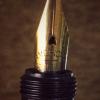
Help With Vintage Flexible Fountain Pen Hunting!
Edo98 posted a topic in Fountain & Dip Pens - First Stop
Hello everyone at the fountain pen network. Today as always I come to ask your advice and share your wisdom and opinions to be able to solve several doubts that I have in my head. I love both modern and vintage fountain pens from the bottom of my soul, most of my feathers are modern and I only have one vintage that is my prized "51" parker. And I've decided that it's time to get another vintage pen but an older one and I've always had the desire to get a vintage fountain pen of ebonite with flexible nib is a great historical piece that I wish to own in my little collection. Now I have the money available to buy one but I have a lot of doubts about which one I should get. I have three ebonite in my sights that I want to obtain but at the moment I can only get one. hese are the fountain pens that I want to get: Parker Jack Knife Safety Fountain Pen - BCHR, Ring Top, Fine Full Flex Lucky Curve # 2 Nib (Excellent, Restored) https://www.peytonstreetpens.com/parker/duofold-lucky-curve/parker-jack-knife-safety-fountain-pen-bchr-ring-top-fine-flexible-lucky-curve-2-nib-excellent-restored.html------------------------------------------------------------------------------------------------------------------------------------------Conklin Crescent 2P Fountain Pen - BCHR, Fully Flexible Fine # 2 14k Nib (Superior, Restored) https://www.peytonstreetpens.com/other-u-s-pen-makers/conklin-pen-co/conklin-crescent-2p-fountain-pen-bchr-fully-flexible-fine-2-14k-nib-superior-restored.html-------------------------------------------------------------------------------------------------------------------------------------------Conklin Crescent 40 Fountain Pen - Large BCHR, Wide Cap Band, Flexible Medium 14k Nib (Excellent +, Restored) https://www.peytonstreetpens.com/other-u-s-pen-makers/conklin-pen-co/conklin-crescent-40-fountain-pen-large-bchr-wide-cap-band-flexible-medium-14k-nib-excellent-restored.html---------------------------------------------------------------------------------------------------------------------------------------------- I like aesthetically more conklin but my biggest doubt to decide to choose one of these is about filling system of these fountain pens which is better? button filler or crescent filler system or level filler? I understand that both have to change the rubber bag every so often, but I ask about their internal mechanisms which is better, more reliable and robust and which pen is easier to maintain and change the bag.I have already attached the links so that they can see them and help me to take my decision and that they can tell me the pros and cons of these mechanisms- 69 replies
-
- flex nib
- button filler
- (and 5 more)
-
Kanwrite Heritage Pen Review I bought a Black Kanwrite Heritage Fountain Pen with chrome trim and stainless steel flex nib (SSF). It came in a beautiful black box with a faux suede lining. I also bought a fine stainless steel (F) nail nib as spare and am going to review both the nibs. The nail or normal nibs are also available in medium and broad points. Thus there is a choice of F, M, B and SSF (Stainless steel flex) and are manufactured in-house. Design Heritage is an injection moulded plastic pen with chrome trim. It is a medium sized pen. It has a blimp shape with straight cut ends. The cap has an inverted truncated cone with beveled edges as finial screwed on top of the tear drop clip. The taper of the cap and flair of inverted truncated cone sandwich the clip ring and give the pen a different look. The cap has a 7mm chrome cap ring with Kanwrite imprinted on it but the quality of print is neither good nor clear (-1 for that). The clip has a crisp Kanwrite inscribed on it. The barrel has an end cap and there is a 2 mm chrome ring on the edge of end cap. The end cap covers the knob of twist piston filler giving it an added security against accidental twist and spill. It also emulates high end pens but is a useful feature which adds to the look of the pen. The pen cap opens in 2 1/2 turns, which is a very welcome feature. The removal of cap reveals a straight stepped section and just above the threads is an ink window bordered by two 1 mm chrome rings adding a convenient feature to the pen. The stainless steel nib is #6 (35mm) which is in absolute proportion to the rest of the pen giving it a very balanced look. The SS is of very good quality and compliments the chrome in shine and looks. The section could have been longer as the fingers touch the lower threads and can be bothersome for prolonged periods of writing (-1). 3/5 Dimensions Weight: 22 gms Length: 140 mm (5.5”) Length of uncapped pen: 129 mm (5”) Posted length: 161 mm (6.3”) Diameter of section: 12 mm (0.5”) Barrel diameter: 21 mm (0.8”) Ink window: 5 mm (0.2”) It is a medium sized pen with very good dimensions, weight and balance when posted. The #6 nib is in absolute design harmony and matches the size of pen. 5/5 Nib & Performance The original nib is a SSF (stainless steel flex) nib with an ebonite comb feed. The nib has a long slit with Kanwrite inscribed on it.The nib is a little hard to flex but gives a flex from fine (F) to broad ( which is good for a modern flex nib. It is a wet noodle flex nib and the feed is very well tuned to minimise rail-roading or dry writing. It can not be compared with vintage flex nibs in ease of use or flex but still for the price and performance it is value for money. The nib and feed are fixed in a nib housing which can be unscrewed and replaced with another nib. The nib housing is threaded at the rear end and also has an “O” ring as added safety feature against accidental leakage. The F nail is supplied in another housing and comb feed. I unscrewed the SSF housing and screwed in the F nib. The fine nib is also stainless steel and has a comb feed. The nib is smooth and wet with a little feed back, which is desirable in a fine point. The nib is embellished with a floral design and Kanwrite inscription which adds to the looks of the pen. The nibs are smooth and wet but the flex could be better (-1). 4/5 Filling system The pen has a twist piston filler with an end cap as an additional safety feature. It holds 2 ml of ink which is good for many pages of writing with the fine point but SSF being a wet noodle uses more ink, thus limiting the capacity (-1). Since nib housing can be easily unscrewed, cleaning and flushing becomes very easy and less time consuming. A few hours soak gets rid of all traces of ink from the nib and feed while the pen can be easily flushed once nib housing is removed. For the ease of cleaning, ink capacity and safety I like this pen. 4/5 Value for Money The pen is priced at INRs 1500/- plus postage (US$ 23 approximately plus postage) and I find it slightly over priced (-0.5). The quality of plastic is such that it has a peculiar smell which is offensive and kind of takes some thing away from the pen (-0.5). Other than the price, it is one of the most reasonable options in flex nib. 4/5 End Note It is a must have for any serious fountain pen user and collector for it offers an easy use of multiple types of nibs as well as offers one of the most reasonably priced flex nib options. Total Score: 20/25
-
Hello all, I partook in the Limited Edition Ebonite Edison Morgan (say that 5 times fast) this year and I have been enjoying the pen immensely. It's my first Ebonite pen, but certainly won't be my last. I recently splurged a little and ordered a Fine, Full-Flex nib from Richard Binder for the Morgan (after seeing Brian Gray's video, I just couldn't resist). It arrived yesterday and I've been playing with it a good bit. I've noticed that the converter is a bit... um... lacking in volume. Basically I'm having too much fun, but my fun gets cut short because I run out of ink (OH THE HORROR!!!). I know that a lot of Brian's pens can be converted to eyedroppers. Is it safe to do this with an Ebonite pen? Is there anything I should worry about? I have the silicone grease and eyedroppers and what not on-hand, I just don't want to ruin the Ebonite or something. Any insight would be great. Thanks so much! Matthew
- 23 replies
-
- ebonite
- eyedropper
-
(and 5 more)
Tagged with:
-
Dear fountain pen people, First time post, lifetime fountain pen writer. I have recently inherited a few fountain pens from my grandmother. One is a mint condition parker 45 with her name engraved, a nice memory to own. The other two pens are a little more complex to describe, they are I’m guessing of a 1940’s design. Pictures below. One is an ebonite button filler with a missing pressure bar inscribed 'Luxor'. The other is a blue celluloid candy stripe lever filler, again with my grandmothers name engraved and the word 'Alfa'. Both pens are missing sac’s and more importantly, missing feeds and nibs. I did a little measurement of the sections and I have to believe that both pens would have had a feed that is about 4mm in thickness. I know there are plentiful replacement nibs available, but as you will know, they are all starting at 5mm or ar a #5. As it is now, I have two broken fountain pens that are, at best, a nice memory. However, I am a daily fountain pen user and I would much rather see these pens restored and added to my routine, maybe as a flex pen, a daily writer or even fill one up and use it in the office. Any help or advice would be greatly appreciated.
-
I have a suspicion that I have ignored a specific but essential part of the formula for easy use of flex pens -- which ink works? The variation of line width in flex writings depends on the ink flow creating a consistent connection and fillng of the line being developed between the tines. When the flow of ink only flows off the tines, not remaining connected across the gap between them, you get railroading. When the ink stretch between the tines is not broken as the pen moves a clear, solid line develops as the ink transfers to the paper. Often wide stretch between the tine breaks the ink bridge by not feeding the ink to it quickly enough -- or ink running out on the tines not transferring to the nib from the feed quickly enough. So far this newbie (me) has found a plethora of articles and videos on fitting nibs and feeds, modifying feeds and writing slowly -- but so far no real analysis or comparative testing of fountain pen inks for their efficacy of use or appropriateness for flex use. Also noted are the notes that India ink has the proper viscosity for flex use in dip pens, but is rotten for use in fountain pens clogging them, corroding them and doing bad things. Also articles indicate that fountain pen inks vary viscosity and "stretchability" between the tines not only by brand, but often by color within brand. And sometimes, batch to batch, an ink will limit or open the width of line being attempted at a normal speed before it breaks the bridge or runs out of the nib/feed arrangement. So, the question then becomes what inks work or do not work for fountain pen flex work and within what parameters of width, speed of movement, color, feed type and feed modification, and which do not work? Is there a brand that consistently, across colors or partly in XXX colors that will work well in flex? Is there an additive that can be put in to an ink that normally would not flex which would increase the ink's range AND not damage the fountain pen. Dip pen users use gum arabic for this addtive, but none recommend using that substance in fountain pens citing severe gumming and plugging issues. Maybe this is the sort of challenge Nathan at Noodler's could take on to release a line of designated flex friendly inks in various colors or somehow mark current inks as to "flexworthiness." This might not be a profitable set of tests/developments at first, but I imagine it as a fun challenge. Lastly, if you got this far -- what has your experience shown so far as the best ink to use for flexing -- and does that vary drastically with the nib metal, feed configuration. and cleaning regime required for your flex pen?
- 1 reply
-
- flex nib
- copperplate
-
(and 2 more)
Tagged with:
-
The two minute guys have posted a review video of yet another Indian flex pen, once again made by Kanwrite, which is called the Kanwrite Standard Flex Fountain Pen. First things first, here is the review: Now, like last time, i don't know if this pen is sold by Noodlers (under its brand name) in USA or not. But it looks like a great flex pen.. I have done some research on the pen - it was manufactured by Kanwrite in 2009 and is the companies most compact fountain pen. And its very cheap for a flex pen, and the guy claims it is as good as Noodlers Ahab. Even if it is not, i think it is going to be a great introduction to the world of flex pens. Does anyone own this pen? Is it good? Please share your experience here. I am getting it from the seller and hoping to get a discount on the price and great review by the guy, btw. Kudos to him
- 14 replies
-
- fountain pen
- reviews
- (and 8 more)
-
Hello everyone! First I am very impressed. I would never imagine an entire and large community would exist for fountain pen art so I am really excited! I already found help and learned a lot on the website but there is so many choice that i am confused so i allow myself to request your advice. I spent the day watching different video and review and I felt overwhelmed. That's why this title. I am ending a contract and my colleagues will offer me the traditional pen Caran d'Ache ivanhoe but I am sure I will not use it. instead of that it is a good opportunity for me to get a fountain pen with flexible nid but I do not know which one. I would like to do calligraphy and drawing with it only and not an everyday writing use. The budget is 200 - 300 Dollars. I already checked and saw the following brands: PILOT CUSTOM 912 14k falcon Noodler's Ahab Desiderata Flex Pen (no idea if i can find this in Switzerland) I also saw that it worth to check the vintage choices but since it is a gift and it has to be engraved it need to be new. I also know it is better to test before doing a choice but I do not have time. Finally I saw video like this or that made my mind blown. So I am lost :-) Thanks for your help. I am looking forward to learn more about FPN! Best Vanessa
- 22 replies
-
Hello Everyone, I don't announce this kind of thing very much, but I wanted to share it with you kind people because this is one of my favorite places to go on the internet, and the FPN community is what makes it so for me. I am coming out with my latest production pens since the Icarus. I am very pleased with how they both are coming out. Those of you who know me personally know that I am not very easily pleased. It's been a long time since I used a pen that felt as comfortable as these. 1: As some of you know, I love wood. I think it's beautiful, has an unsurpassed feel, and makes an excellent construction material for many things, but it poses unique challenges when used for a fountain pen. I've been struggling with that problem for years, but now, I've finally gotten good enough that I can work with tolerances tight enough to make the dream a reality. For years I've wanted an all-wooden pen, and now I have one. Wooden cap, wooden barrel, wooden grip. Hands down, this is the most comfortable pen I've ever made. Wood can stain, and that's been accounted for in the design. When you get your hands on this, I think the pen will disappear into the experience of writing with it. I want to use it all the time, but for the work I do, I often need a clip for my pens. This pen will come with the option to install a functional, designed steel clip. My first release of this pen is just about 8 units, but I'll be making more in the future. They all fill with a simple, reliable aerometric sac. The beauty of an aerometric sac is how easy it is to fill and clean, but the ink capacity (around 2.5ml) isn't as voluminous as you might get with an eyedropper filled pen, so to prevent you from getting caught with an empty pen, some of these will have an ink window. Three, to be exact. 2. The first run you'll have available are made from highly patterned fancypantz german ebonite. The material has a black base color and has green, red or blue ripples in it. The big problem with this material (besides it being very expensive) is that it's so dark that it really doesn't photograph well, and even in person, it's hard to get a clear fix on what's going on with the color pattern. Well, I've solved that problem through faceting. The way the light glints off the sides attracts the eye in a way that's hard to describe. The pen has 12 gently tapered, faceted, painstakingly-finished-by-hand sides on the cap and on the barrel. Ink windows are optional, as are clips with this model. So, I've been talking about how these pens feel while writing. What nibs can you use? Jowo F (more of a "Western fine"/medium; .4-.5mm)Pilot XF (a true extra fine .2mm)Zebra G flex nib units (with my usual, handmade, purpose-designed ebonite feeds)Nemosine .6mm italicAll these pens come with interchangeable nib units, so you can switch nibs within one and the same pen. Just unscrew (or, if you want, just use a simple hex/Allen wrench you probably have at home). These will come out this week. I think "Black Friday" is stupid, but if you want to be the first to know when these pens will be available for sale, please consider signing up for my mailing at the top of this FAQ page here. Price? I can't speak to that right now, but I'd be interested in hearing your thoughts on that subject. Please email me at DesiderataPens <<<AT>>> JEE-MALE <<<DOT>>> com., or leave a comment.
- 6 replies
-
- flex pen
- desiderata
-
(and 8 more)
Tagged with:
-
Hey guys! I picked up this nib in a Waterman 12 eyedropper for $1.50 (missing the cap) I have it fit in a Noodler's nib creaper for the time being. I would like to know exactly what this nib is... It at least resembles the artist nibs that I have seen (that also tend to be in the 12s) does anyone have an exact ID? The curvature seems to be a bit different that the other artist nibs I've seen... It's a wet noodle for sure. Please pardon my crappy flex writing. Photos shortly
- 16 replies
-
- waterman
- waterman artist nib
- (and 8 more)




